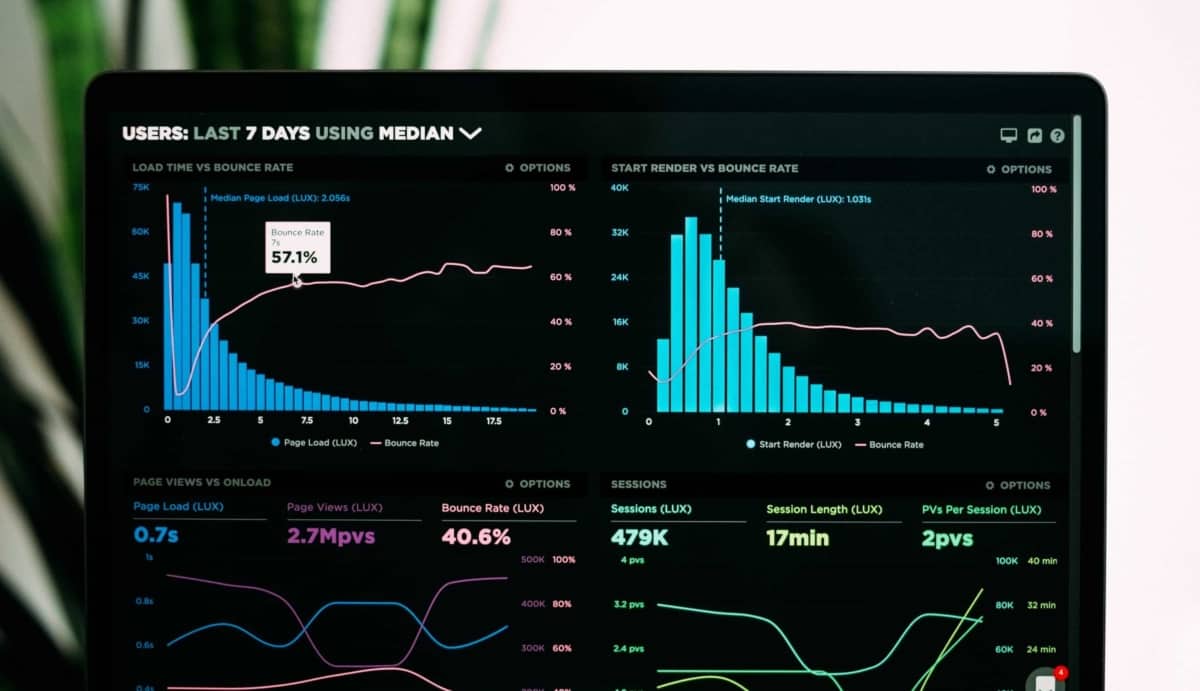
For businesses that depend on online sales, when sales go sideways or downhill, it’s common for people to immediately look at marketing for the answers.
There are many rocks to turn over to identify the source of bad (or good) performance.
You don’t need to run a week-long forensic investigation to find the answers, though. Start with these items below using Google Analytics.
(For illustration, we’re pretending that your business’ Cyber Monday sales are lackluster)
Seasonality: If you’ve been in business for multiple years, compare your site’s traffic and conversion rate data to Cyber Monday in previous years. Create a day-by-day comparison in the week leading up to Cyber Monday to see if (and when) the dropoff started.
Devices: Typically, conversion rates on mobile are lower than desktop or tablet. Using the day-by-day traffic and conversion rate table, add rows to track traffic by device. An overall increase in traffic may have minimal sales impact if you receive a higher % of mobile traffic.
New vs. Returning Users: A shift in new vs. returning users to your site could cause a decline in sales. First-time site visitors likely are familiarizing themselves with your brand/product. These users are typically high in the purchase funnel. Returning users often convert better.
Geography: If your business operates internationally, view the breakdown of traffic by country. Consider the price of your products in countries with steep USD exchange rates. If traffic from these countries increases as a % of total site traffic, conversion rates will decline.
Campaigns: If you use UTM parameters to distinguish click traffic, analyze the performance to see if your ad spend allocation was off.
If the majority of your budget was spent on Google search, and Google search traffic converts at a lower rate than other paid channels, you have a problem.
Also, if you create custom landing pages for each ad channel, measure the differences in conversion rates. Maybe the paid search landing page underperformed vs. the paid social landing page. You can also view bounce rates by landing page to investigate this further.
Use the same analysis for your non-paid efforts if you use UTMs across email, social, and referral campaigns.
Traffic by Source: The best converting traffic for last-click attribution is usually direct or organic. The worst-converting traffic for last-click attribution is often paid or social.
Your Cyber Monday traffic mix could reveal that visitors from non-paid channels dropped off YOY. That’s not a good sign.
Cannibalization: If your website is not the only source of sales, see how your channel partners or wholesale distributors performed. If there’s a strong negative correlation between sales channels, that could signal cannibalization.
Anomalies: If your YOY Cyber Monday sales declined precipitously, it’s worth looking back at last year to see if there were any abnormal events that buoyed sales.
If a celebrity with 200,000 Instagram followers organically posted about your product three days before Cyber Monday last year, this is unlikely to be repeated. Be aware of these variables that make YOY comparisons difficult.
In addition, macro-level economic conditions that are outside of your control can influence sales. If your Cyber Monday sales are down 20% YOY, but Cyber Monday sales industry-wide are down 40%, that context is important.
Discounting: Are you offering less aggressive Cyber Monday discounts vs. last year? Are competitors offering steeper discounts? Did you switch from a % off discount to a $ off discount? Comparing the discount usage rate can reveal how attractive users perceive them to be.
Funnel Reporting: Evaluating your overall conversion rate is a good first step, but don’t stop there. If the checkout funnel changed YOY, maybe there is a form or field that is tripping up users. Find out which step in the checkout flow is seeing the biggest dropoff, and then hone in on that specific page to uncover more insights.
Tools like Full Story and Crazy Egg can help you identify what is interrupting the checkout flow.
Average Order Value: Total Cyber Monday sales may be down, but if your average order value is up, that could compensate for the decline and maybe even lead to higher overall revenue than planned.
If your online store’s product mix contains a higher avg. price per product than last year, then it’s logical that sales would decline, but not necessarily at the expense of total revenue.
Performing An Audit
If your business needs help auditing its advertising performance or overall customer acquisition strategy, email us at [email protected].



